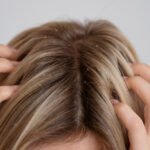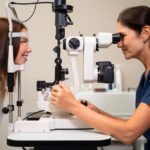The skin, our body’s largest organ, often communicates its state of health through various manifestations, including the occasional appearance of blemishes. Two common skin concerns that can be perplexing due to their similar appearance are cold sores and pimples. In this article, we delve into the key differences between cold sores and pimples, exploring effective treatments and preventive measures to keep your skin healthy and clear.
Cold Sore vs. Pimple: Understanding the Basics
Cold Sore:
Cause:
Cold sores are primarily caused by the herpes simplex virus (HSV), with HSV-1 being the usual culprit.
Appearance:
Typically, cold sores present as small, fluid-filled blisters that may cluster around the lips, although they can occur in other facial areas.
Symptoms:
Tingling, itching, and burning sensations often precede the appearance of a cold sore. As the blister ruptures, it forms a crust before healing.
Contagious:
Cold sores are highly contagious, especially when the blister is open. They can spread through direct contact or by sharing personal items like towels or utensils.
Pimple:
Cause:
Pimples result from the clogging of hair follicles with oil, dead skin cells, and bacteria. Hormonal changes, stress, and certain skincare products can contribute to pimple formation.
Appearance:
Pimples manifest as red, inflamed bumps with a white or yellow center (pustule). They can occur anywhere on the face, chest, or back.
Symptoms:
Pimples may be accompanied by tenderness or pain, especially when touched. They can range from small, superficial blackheads to larger, deeper cystic pimples.
Contagious:
Pimples are not contagious. They result from internal factors rather than external viral infections.
Treatment Approaches: Cold Sores and Pimples
Cold Sore Treatment:
Antiviral medications:
Prescription or over-the-counter antiviral creams can help shorten the duration of a cold sore.
Lip balms:
Moisturizing lip balms with ingredients like docosanol can soothe and protect the affected area.
Avoid triggers:
Identifying and avoiding factors that trigger outbreaks, such as stress or sun exposure, can reduce the frequency of cold sores.
Pimple Treatment:
Topical treatments:
Over-the-counter creams containing benzoyl peroxide or salicylic acid can help reduce inflammation and promote healing.
Prescription medications:
In severe cases, a dermatologist may prescribe topical or oral antibiotics, retinoids, or other specialized medications.
Hands-off approach:
Avoid picking, squeezing, or popping pimples, as this can lead to scarring and prolonged healing.
Preventive Measures: Cold Sores and Pimples
Cold Sore Prevention:
Sun protection:
Using lip balm with SPF and wearing hats can shield the lips from sun exposure.
Stress management:
Practicing stress-reducing techniques, such as meditation or exercise, may help prevent cold sore outbreaks.
Hygiene:
Avoid sharing personal items, especially during an active outbreak, to prevent spreading the virus.
Pimple Prevention:
Gentle cleansing:
Regularly cleanse the skin with a mild, non-comedogenic cleanser to remove excess oil and prevent clogged pores.
Balanced skincare routine:
Use skincare products suitable for your skin type, and avoid excessive use of heavy creams or oils.
Healthy lifestyle:
Maintain a balanced diet, stay hydrated, and manage stress to support overall skin health.
Differentiating between cold sores and pimples is crucial for choosing the right treatment and preventive measures. By understanding the causes, symptoms, and appropriate interventions, individuals can navigate the intricacies of their skin health and enjoy a clearer, more resilient complexion.
Image credits : Image by diana.grytsku on Freepik








No Comment! Be the first one.